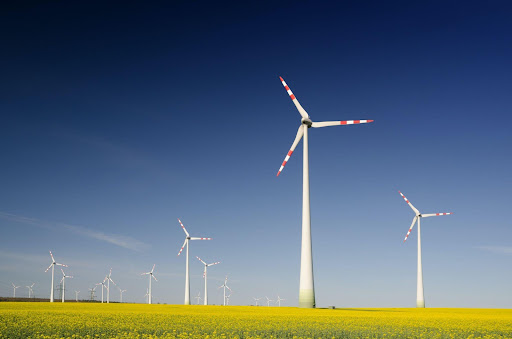Wind towers can conserve thermal comfort energy throughout the hotter months, particularly during peak hours.
Table of Contents
Dimensions of a Wind Turbine, including its Height and Capacity
Wind turbine height does not vary based on rated capacity of the tower for wind. There is no clear correlation between tower size and height. A tower for a turbine with a capacity of 5 kWh might be anywhere between 30 and 140 feet in height.
Regulations imposed by municipalities and states concerning the height of wind turbine systems
The performance of tiny wind turbines may be adversely affected by covenants that limit their tower height to 30-40 feet/9-12 meters in certain places. It merits your whole attention.
What Is the Ideal Height for a Wind Turbine Tower?
As a rule of thumb, the bottom of such turbines must be at least 9 m well above top of any impediment within 300 feet (90 meters) of the tower.
Different Varieties of Wind Towers
In terms of wind turbine towers, there are two basic types: free-standing and guyed (https://en.wikipedia.org/wiki/Guyed_mast#:~:text=A%20guyed%20mast%20) wind towers.
The tilt-down tower configuration is a viable option for smaller wind power generation systems. They make it simple to undertake periodic maintenance, which is quite important….
They are the cheapest and easiest to erect; they come in a variety of shapes and materials, including aluminum, which is prone to breaking; and they take up more space than self-supporting towers.
Pipe or tubing is used in the construction of non-guyed tilt-up or cylindrical towers, which have a design that allows them to sustain themselves. Because they don’t utilize man wires, these structures are more compact. Climbing pegs are an optional addition to these towers, which also come at a somewhat higher cost than guyed towers.
Both the Obstacles and the Wind Speed
The turbine tower serves the purpose of ensuring that the wind turbines are positioned upwind of any obstacles that may be present.
Utilize a tower to elevate the turbine over any potential impediments close to the ground, such as fences, trees, buildings, and other structures; this step is critical to the effectiveness of any wind energy system. Turbulence in the wind is produced by obstructions, which results in a significant reduction in wind speed.
This is especially obvious in urban systems, which have extremely small towers (sometimes consisting of little more than a short pipe), and as a result, they are often ineffective due to the impediments that impact the flow of wind and the speed of the wind…
For the most part, wind power towers come pre-assembled with the rest of the system’s components, including the turbines themselves.
Mega Turbines
The mega turbine generators have towers that are built of tubular steel, and the height of those towers vary depending on the circumstances of the location. 21 Vestas V90 3.0 MW turbines are installed on 104-meter towers in Scurry County, Texas, as part of the Texan Snyder Wind project.
Wind Turbines Mounted on Poles Configuration
Lattice towers are a cost-effective and tried-and-true option since they are constructed using welded steel profiles. Click here for more on lattice towers.
The bulk of the lattice towers are unguyed, with the exception of a few three-legged structures that are hung from guy wires on all sides. On several of them, climbing is a viable option.
The tower type that is seen the most often across the globe is the steel wind turbine tower. The steel tower is assembled from parts ranging from around 20 to 40 meters in height. Flanges are used to join the various elements of the wind tower. After that, the flanges are secured with bolts. All steel wind towers taper, meaning their diameters decrease as they rise.
The tower of the wind turbine with the lattice structure is constructed up of hundreds of individual steel components. It is quite similar to the conventional appearance of a communication tower. Some lattice tower builders also make transmission towers for this purpose. They have the necessary expertise to ensure that the quality remains consistent.
Like a steel tower, a precast concrete tower is made in pieces. Following the transportation of each part to the location, the structure is subsequently put together. The tower that houses the wind turbines is the central component of the overall wind power producing system. In order to sustain the top turbines and absorb energy movement of such wind turbines as the wind velocity rises with height, wind turbine structures are used.
Wind turbine columns are steel tube poles with a specified height so the wind turbine may work at the proper location. They must also keep adequate intensity and stiffness so they won’t fall during a typhoon or hurricane.
The bulk of wind turbine generating systems above 100kW utilize steel cylinders or conical towers. High-quality hot-rolled low-alloy high-strength steel is used for the wind turbine tower, and integrated forging is used for the flanges.
